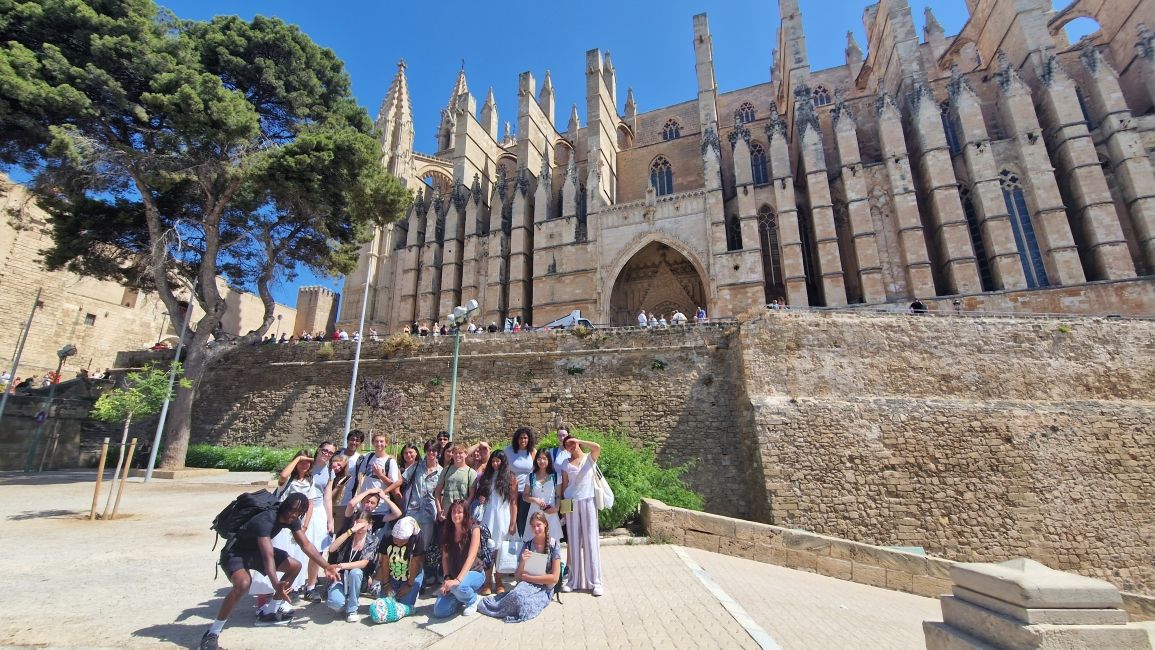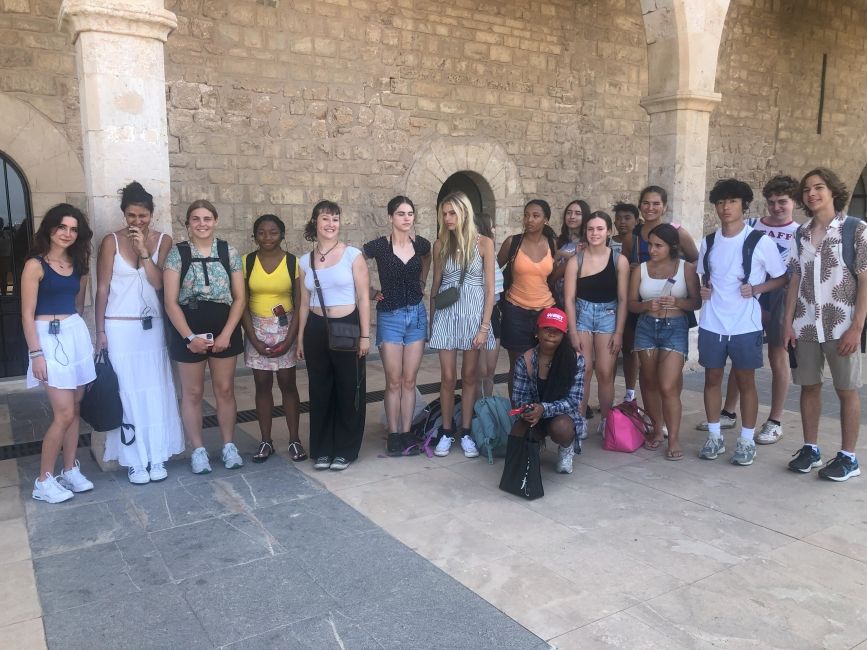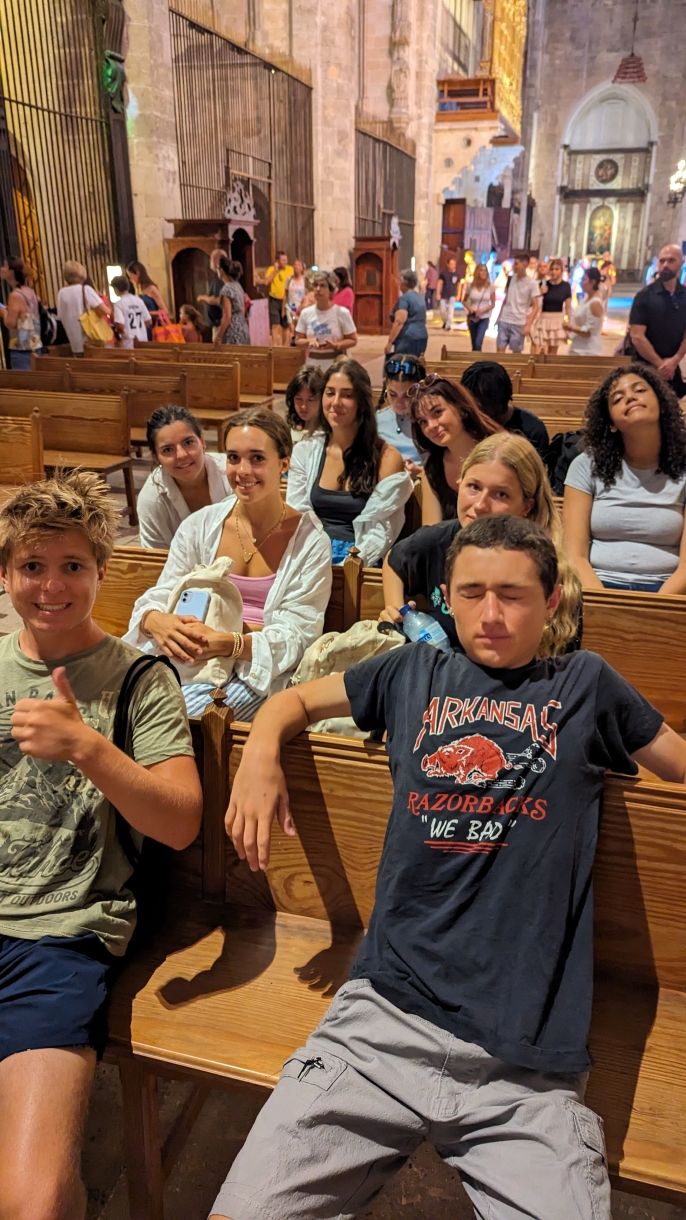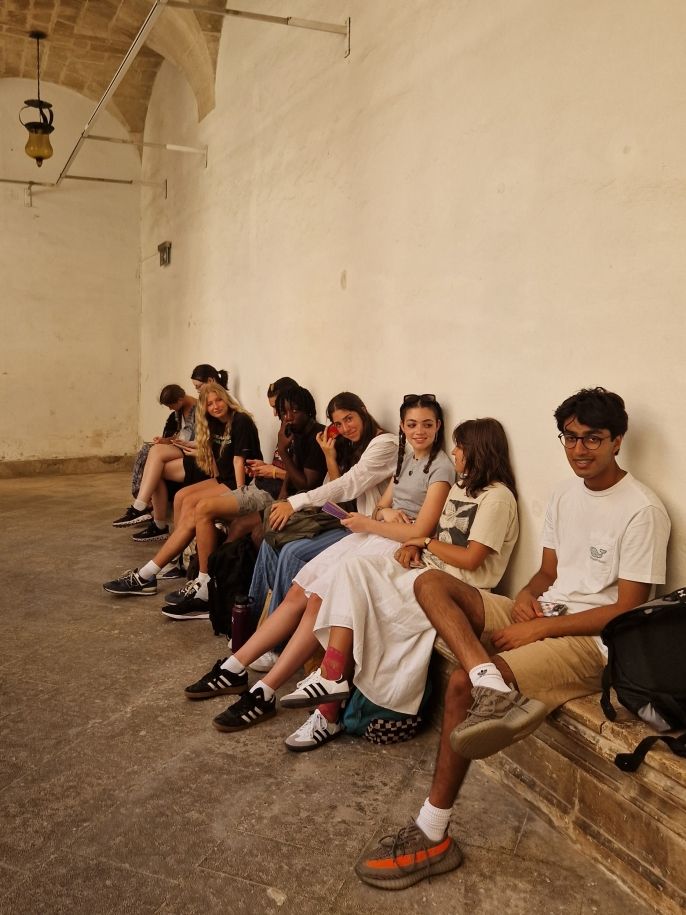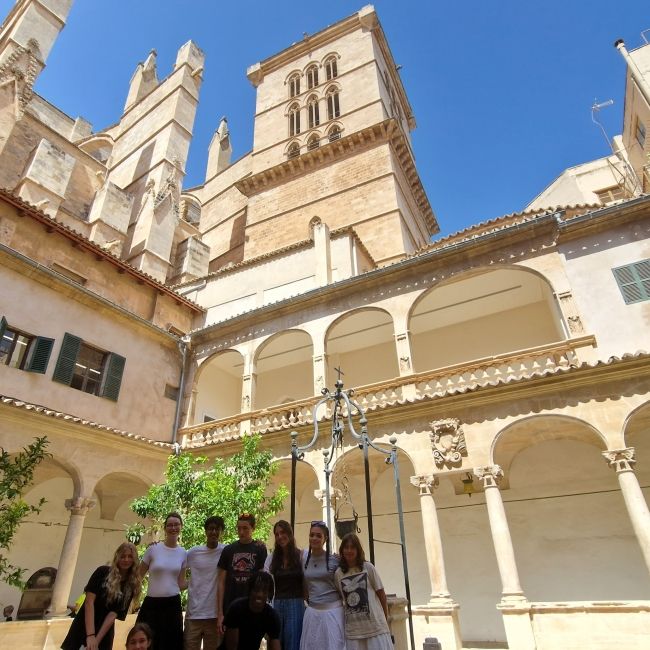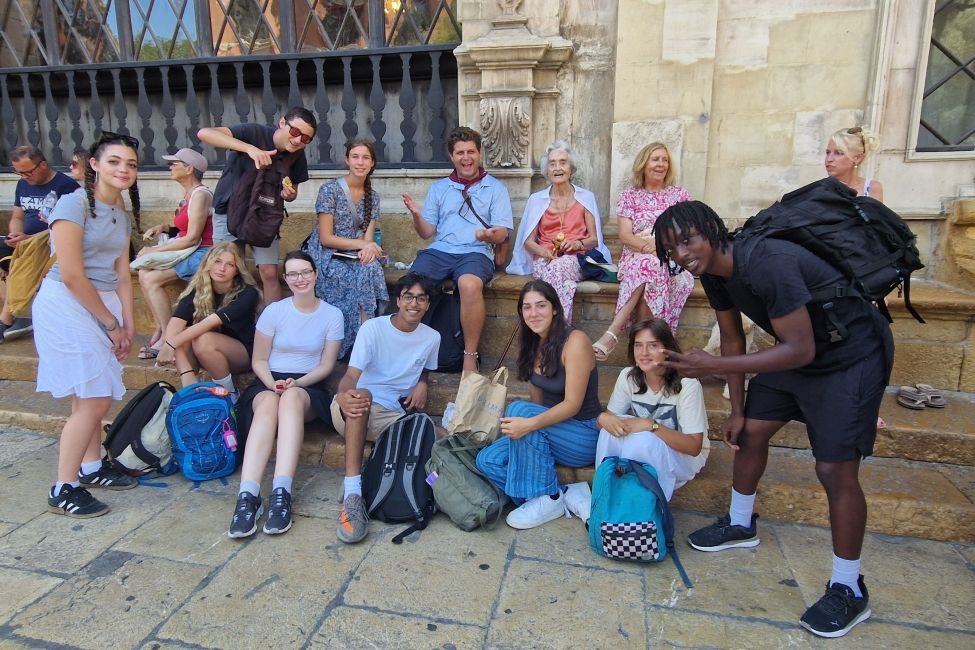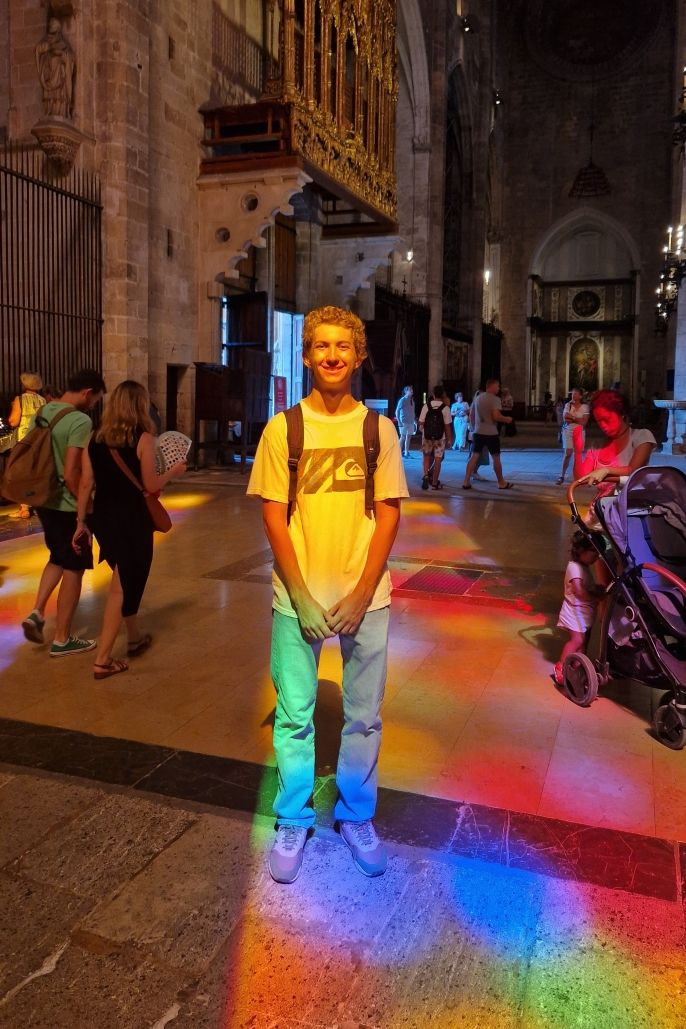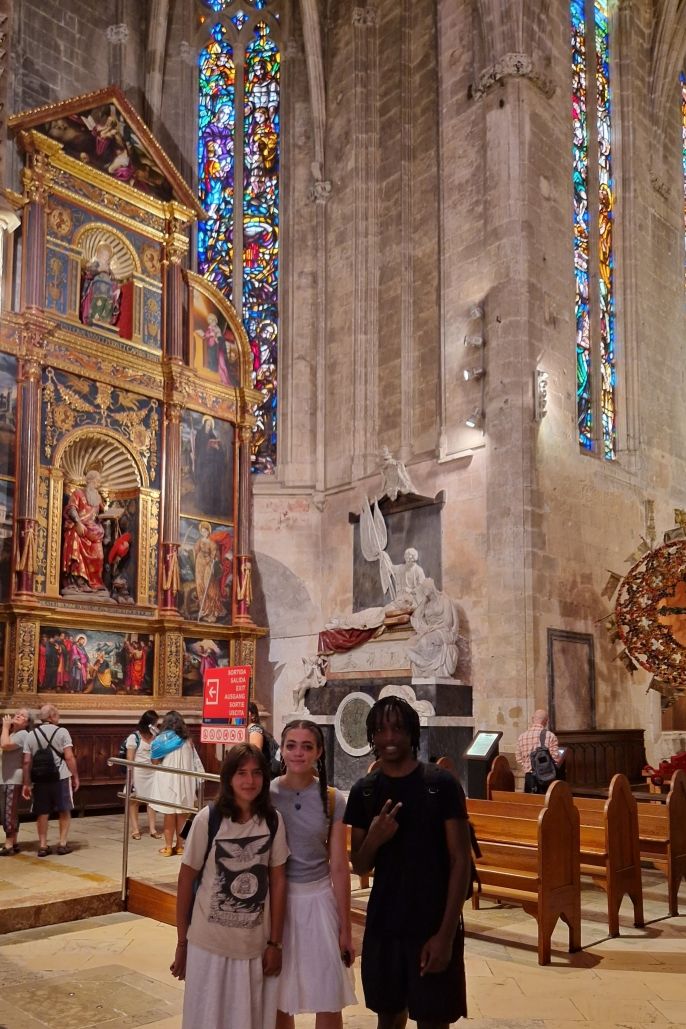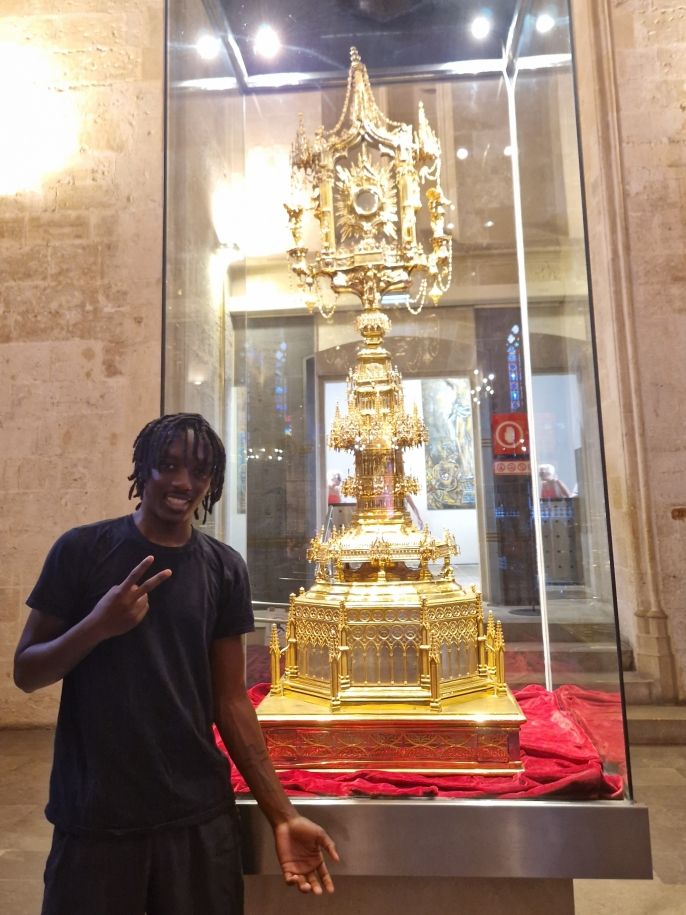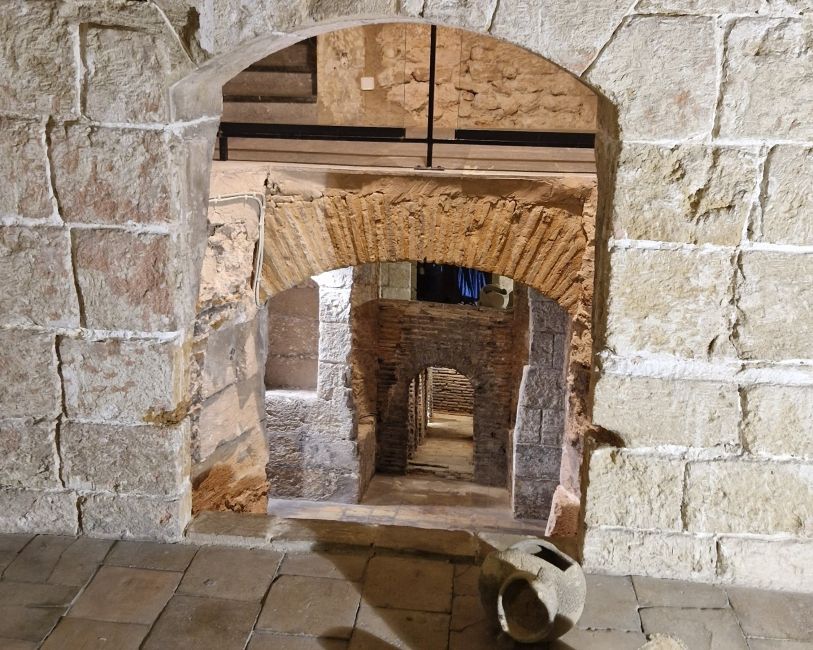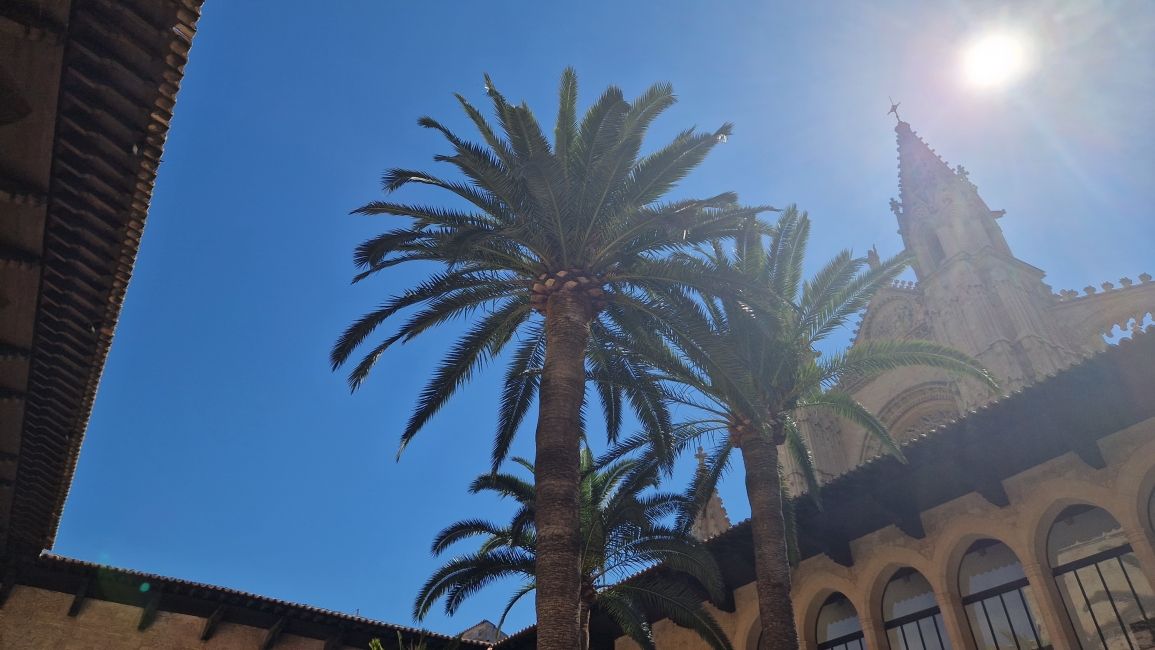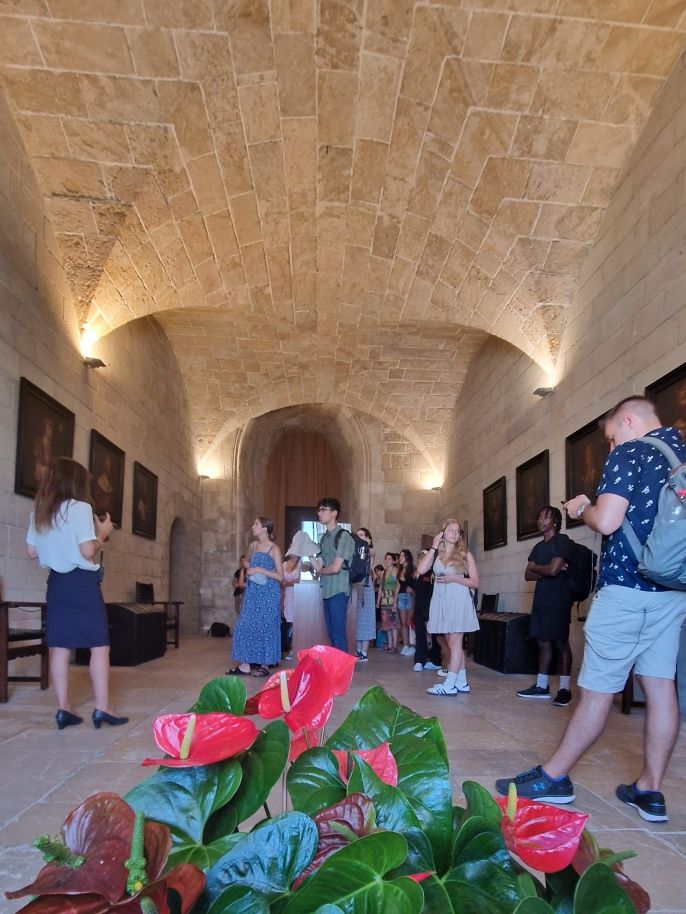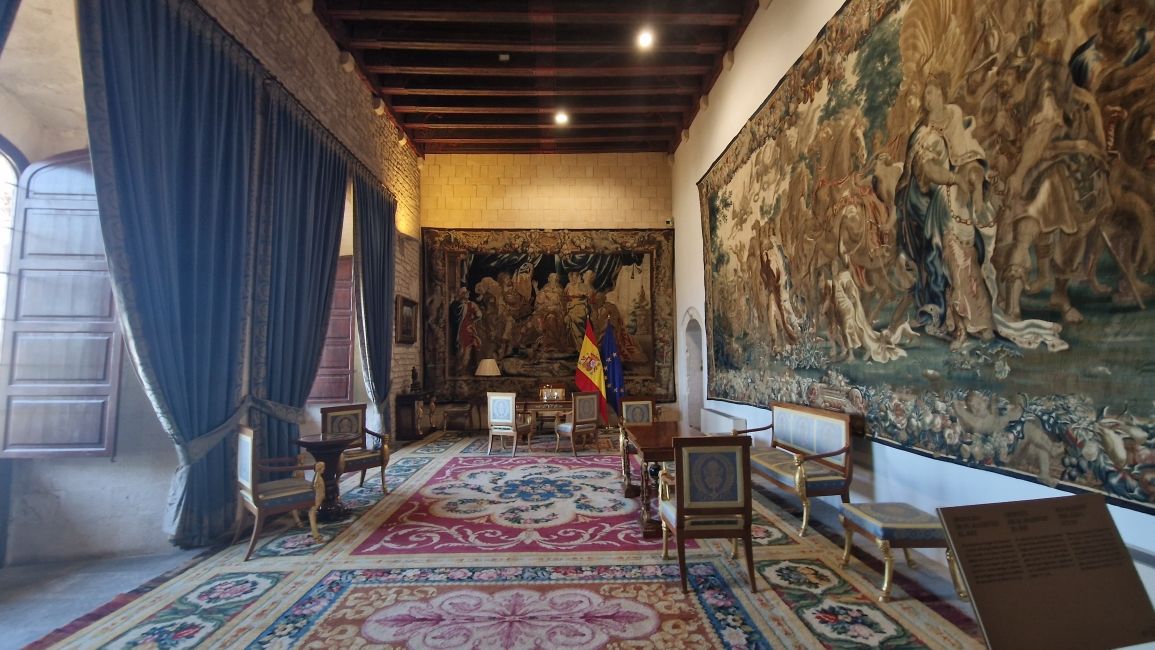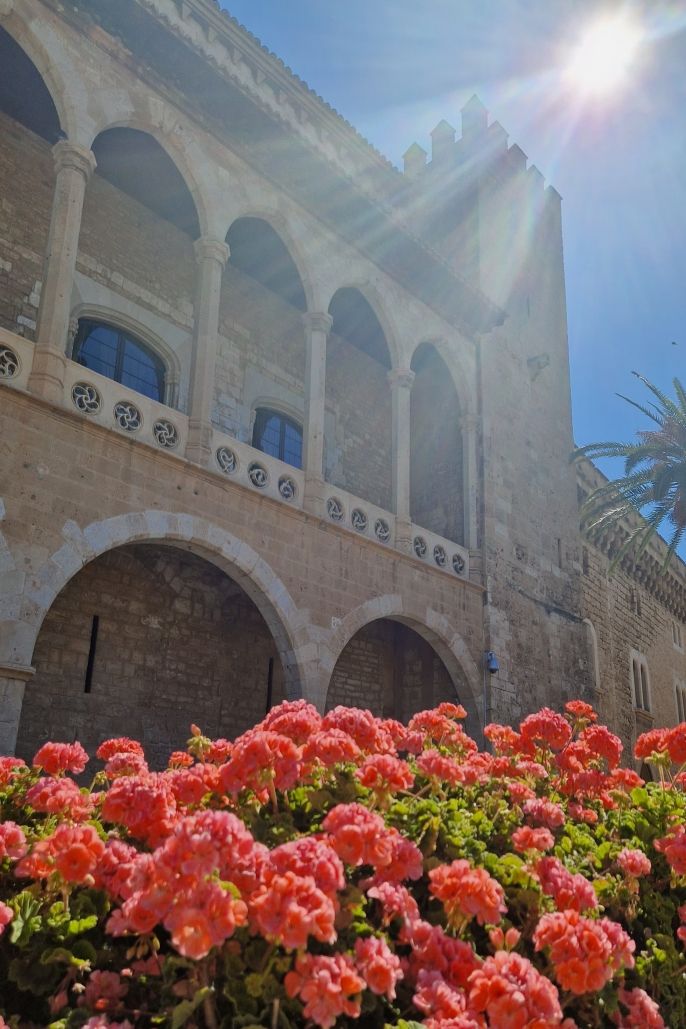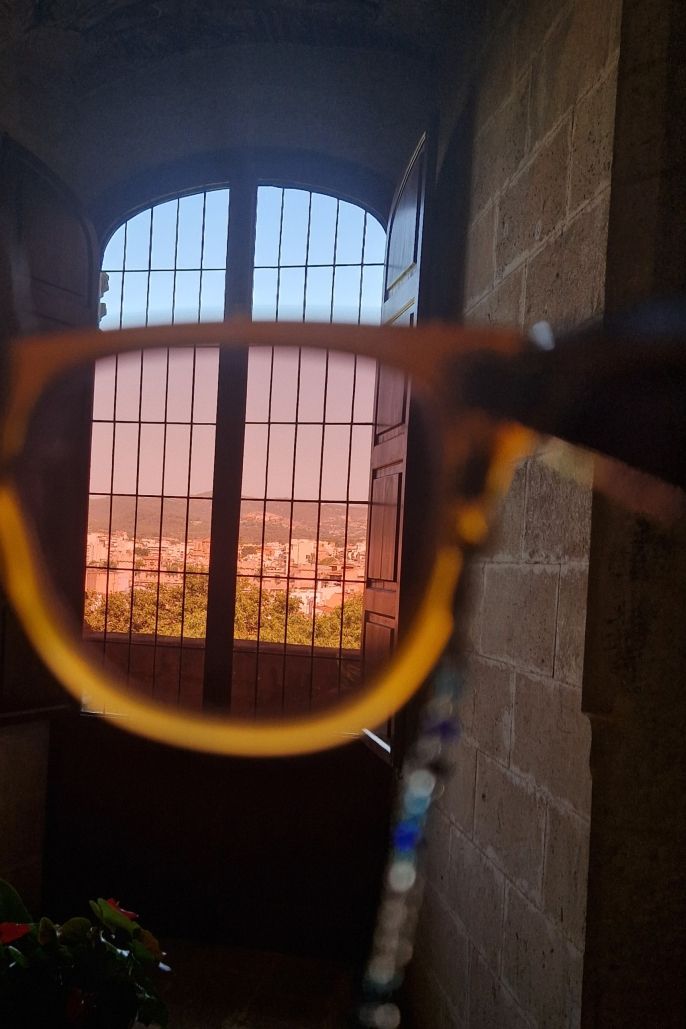Getting Some Culture at la Catedral y el Palacio de la Almudaina
A por lo cultural
Well, we finally got out of the sun and into the more-than-welcome shade and relatively (to outdoor temperatures at least) cool interiors of two of the most iconic historical buildings in Palma. On the 13th and 14th of July, we visited these sites of historical and cultural importance and you’ll read all about it here.
El Palacio Real de la Almudaina
The Almudaina Palace, usually just referred to as la Almudaina, is not only a historical site/museum but also a current official residence of the modern Spanish Royalty. While the monarchs do not actually live there when visiting Mallorca, which they do every summer, instead opting for a more modest home not far away the King and Queen, they maintain official state offices in the palace and host diplomatic missions and official state visits with foreign dignitaries and heads of state. We had a tour guide (pictured, dispensing knowledge) show us around the grounds while explaining some of the following topics/points of interest:
- Atriums and greeting areas
- Various squares, gardens, and terraces
- State offices and hosting areas
- Artifacts from near and far
- Arab baths and Moorish fitness facilities
- Ya’ know, the normal palatial trappings
While we were at the Almudaina, the other half of the students were let to roam around at their leisure through the halls, chapels, and naves of la Catedral de Mallorca (Cathedral of Mallorca). What in fact makes a Cathedral, a Cathedral, you ask? Well, it’s just a fancy name for the principal church of a Catholic Diocese (a regional division of the broader church). And, since Mallorca is a diocese unto itself there is but one cathedral on the island. The other Balearics each have one as well.
La Catedral de Mallorca
The first work on what is now the Cathedral had begun by 1229, predating the groundbreaking on the palace by 80 years, though both structures have Moorish roots and other histories that go back a few more centuries as well. Though commissioned by King James I (Catalan, Rei Jaume I) of Aragon in the year mentioned previously, the last stone would not be laid until 1601. Designs changed over those intervening four centuries as well as the wants and wishes of nobility, leaving us with this marvelous structure that dominates the skyline of Palma today. The Cathedral is home to some of the tallest naves (Spanish, bóvedas) of any Gothic cathedral (44 meters to the peaks). Additionally, it is home to the largest rosetón (rose window, of stained glass usually) in Spain and one of the largest in the world, measuring over 13 meters in diameter.
Aside from the impressive stained glass, towering naves, flying buttresses, grand facades, and such; you will find photos of:
- Students appreciate the various minor chapels that circle the entire building
- Posing next to some priceless objects related to the church and Spanish monarchy
- Basking in tinted light that baths the churchgoers and tourists alike
- Drawing the goings-on in a sketchbook
- And, just sitting in the pews, soaking it all in
Upon wrapping up we exited through the, you guessed it, gift shop. Some folks, myself included bought some chachkies for our people back in our homes. I purchased some rather nice hand fans (un abanico), one for me, one for my momma, as well as a cookbook of Mallorcan cuisine.
On the 13th, I treated those from my group to some Mallorcan panades (empanadas) and ensaïmada (sugar and fluffy puff pastry). We sat on the steps and benches outside of the Palma City Hall (Ayuntamiento de Palma) and the students had the opportunity to chat up some Mallorcan retirees who were interested in their journeys, and some organic conversation with locals to the island.
To wrap up the first of our many cultural activities and learnings, on the 14th, we indulged ourselves and the students in some gelato from a little scoop shop around the corner and snacked in a quiet square just away from all the masses of tourists. And, as always, in the afternoon they were off to class.
All in all, week one went great, you can read about our Saturday excursion across the island to Pollença and Alcúdia in my colleague Penelope's blog.
Next up: hand fan (abanico) painting & flamenco workshops (July 17 & 18). Hope you had a wonderful weekend wherever you find yourself in this world, dear readers.
Hasta la próxima,
Alex
Related Posts
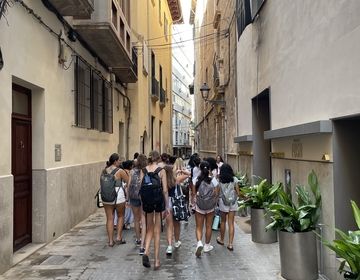
Urban art in Palma de Mallorca
Palma has a lot to offer. It has something for everybody. Here you can find beautiful beaches, delicious food, interesting stores, fabulous plazas, amazing historical buildings and monuments, wonderful people... keep reading
STUDENT TAKEOVER!! Palma Aquarium by LC Student Betsy Bain
The Palma Aquarium was one of my highlights of this trip! I loved the amount of exhibits that there were in addition to the combination of indoor and outdoor reptiles... keep reading
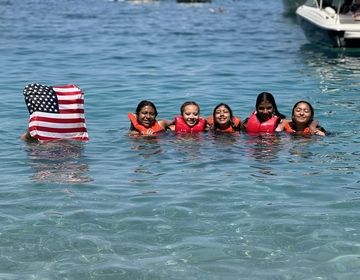
Our adventure to Alcudia
Our 3 day weekend excursion was a huge success. We had a short bus ride in a double decker bus to the north of Palma. It was to the town... keep reading
